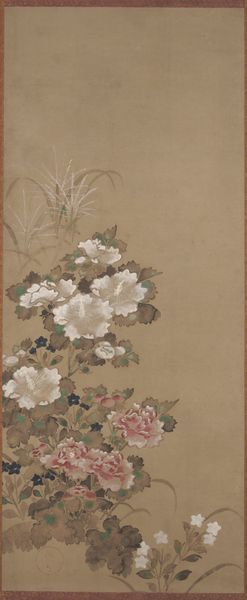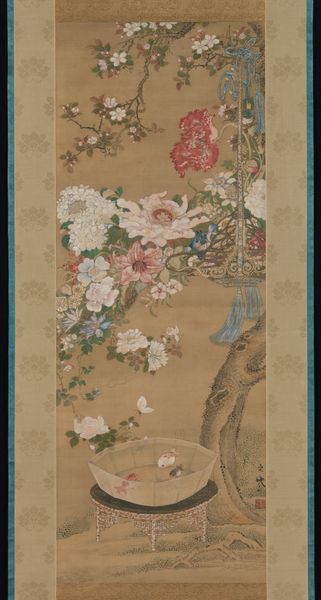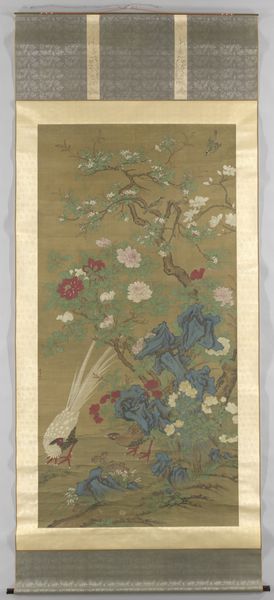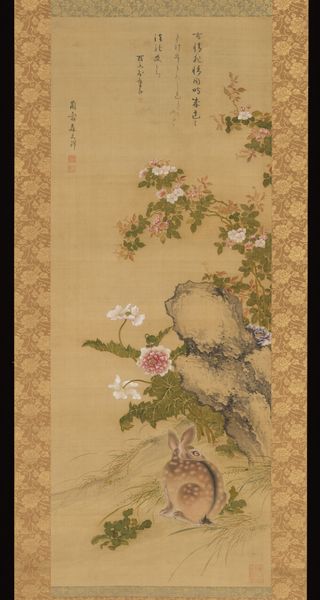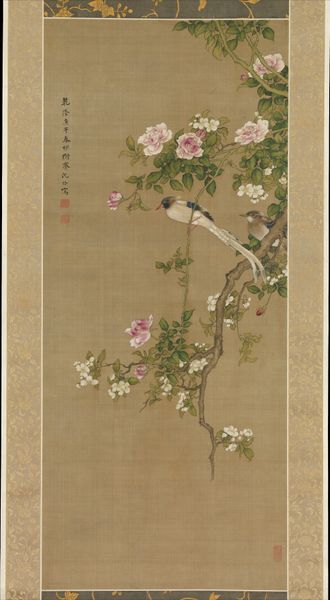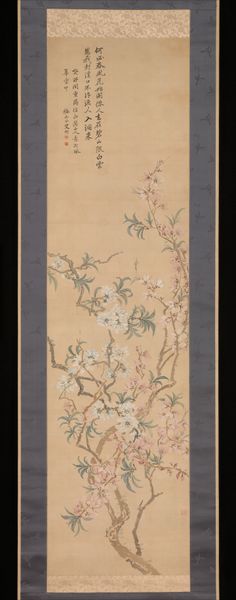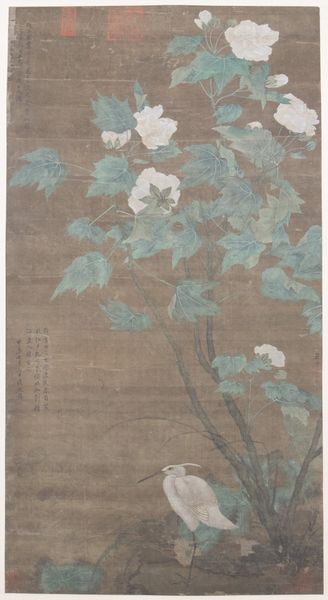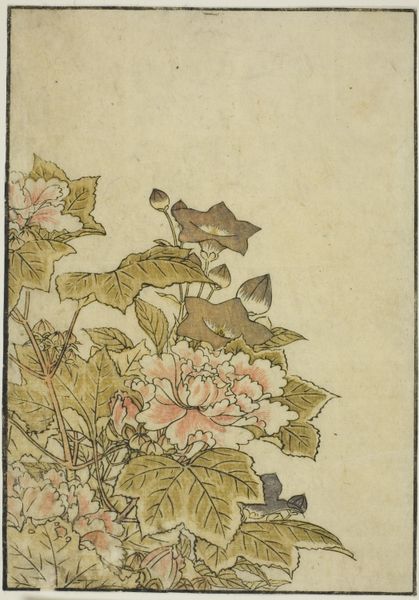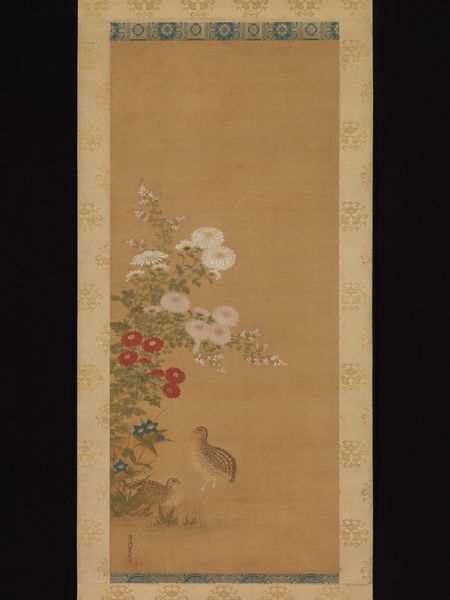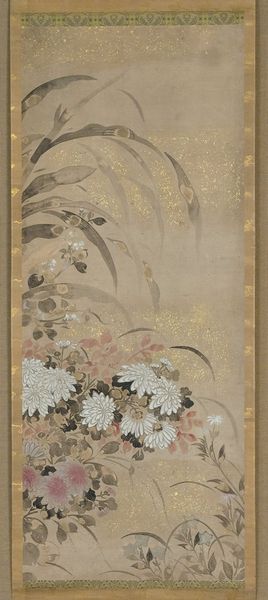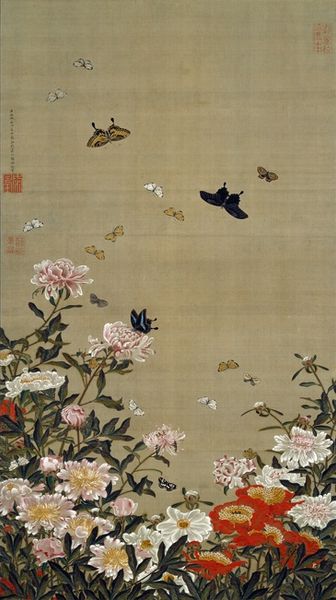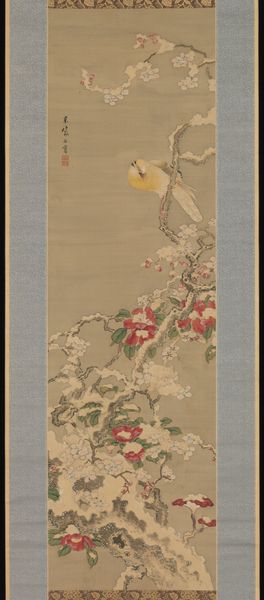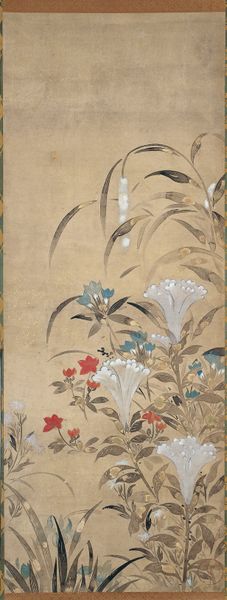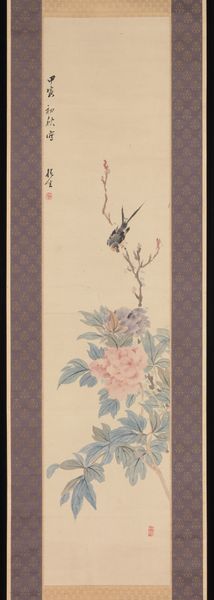
Dimensions: 44 5/8 × 18 13/16 in. (113.35 × 47.78 cm) (image)81 1/4 × 24 1/8 in. (206.38 × 61.28 cm) (overall, without roller)
Copyright: Public Domain
Curator: It strikes me as serene and delicately transient; a sense of stillness with hidden movement. Editor: Indeed! What you're sensing, I think, relates beautifully to the traditions that inform this hanging scroll by Lu Zhi, titled “Flowers,” dating back to the 16th century during China's Ming Dynasty. It's ink on paper. The Minneapolis Institute of Art holds it, so it has travelled far to be here today. Curator: Knowing the "Ming Dynasty" bit, I feel how those historical threads resonate through the image. Look at the framing with the delicate patterns; the flowers like peonies, and the almost watchful butterflies. There is so much here. It feels like time itself is unfolding. Editor: The presence of flowers, especially in Chinese art, always brings such symbolic density, doesn’t it? Each bloom, each insect, held such encoded meaning. Peonies represent wealth and honor, aspirations in a changing society. Butterflies speak of joy and conjugal bliss. Curator: Exactly! And notice their placement - how the butterflies interact with the negative space, and how it draws your eyes around the composition. You feel those fluttering associations mirrored through generations of understanding. And then to position that cultural memory so overtly - the painter knew exactly what they were doing! Editor: I agree! Also, consider the patronage: Hanging scrolls such as these were often commissioned by wealthy merchants and scholar-officials who sought to reinforce their cultural capital and refine their own status through taste and appreciation of such works. The consumption of images like these are a display of one's knowledge, wealth, and good taste, or an aspiration to embody these. Curator: So much about belonging and upward mobility! It changes how one perceives those peonies— less simple "wealth," and more social aspiration and anxious showiness. The choice of certain flowers or insects then reveals more about a patron than perhaps they intend. Editor: I would argue that even today that desire hasn't gone anywhere, has it? To find visual symbols that speak of who we are, and more pointedly, of who we wish to be... That's something the artwork lets us consider, over the course of centuries! Curator: Well said! It makes the encounter timeless. It's like the scroll unrolls something within the viewer too.
Comments
minneapolisinstituteofart almost 2 years ago
⋮
Compared to bird-and-flower paintings of the same period, this painting shows a much heavier use of color, a characteristic typical of the attributed artist, Lu Zhi. It is more concerned with descriptive realism and appearance than a spontaneous ‘composing of the idea' style practiced by amateur scholar-gentlemen. Its rich colouring and meticulous detail provide an intimate, decorative appearance. The charm of the painting also comes from the cultural connotation implied by the motifs themselves. The Chinese name for butterfly, die 蝶, for instance, is a pun on the term die 耋, denoting a person who has reached an old age. Therefore, it may have been created to commemorate an important birthday of an elderly gentleman.
Join the conversation
Join millions of artists and users on Artera today and experience the ultimate creative platform.
